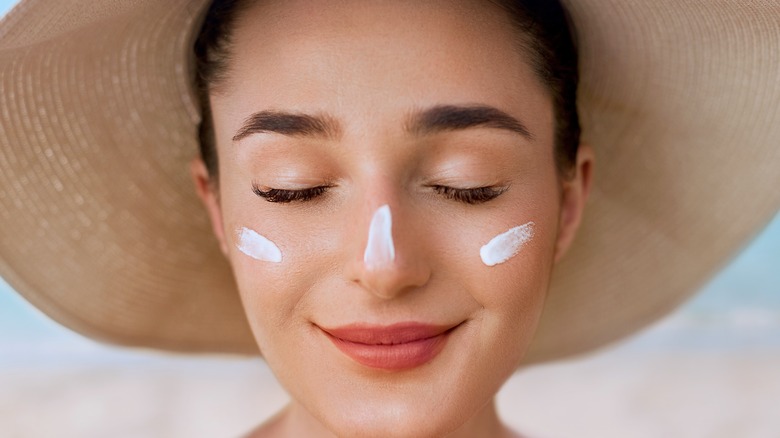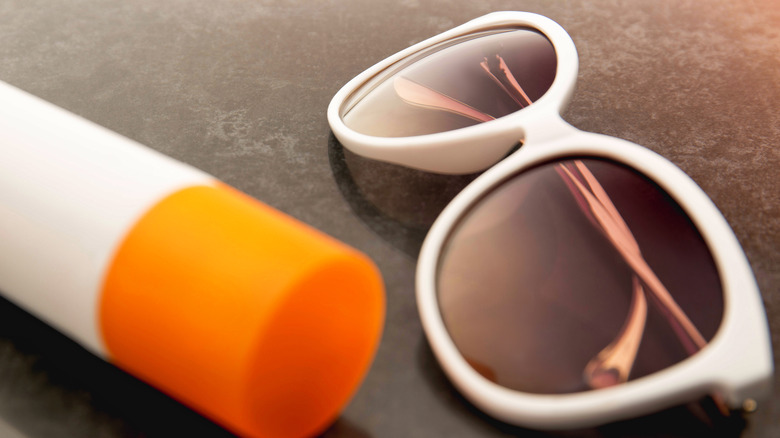How Much Sunscreen You Really Need To Be Using On Your Face
Correction 09/29/22: A previous version of this article stated that 4% of the body's surface area is made up of the head and neck. However, 9% of the body's total surface area is the head and neck.
We know that you're the kind of person who likes to put your best face forward, and that starts with lathering on the sunscreen. While skin cancer can develop in many places on the body, Mayo Clinic points out that it most commonly appears on the scalp, face, ears, neck, lips, chest, arms, and hands. And while the Skin Cancer Foundation notes that procuring five or more sunburns doubles our risk of developing melanoma, they also offer the encouraging information that applying sun protection with at least SPF 15 every morning can reduce that risk by a whopping 50 percent.
In an exclusive interview with Health Digest, Facet's Medical Director Dr. Peter Young suggests that sunscreen application should be as much a part of your morning routine as brushing your teeth. By applying sunscreen to your face every morning, you lower your risk for sunburn and skin cancer. You also reduce the likelihood of premature aging, including fine lines, wrinkles, and age spots. So now that you're on board with daily sunscreen application, the question is, how much sunscreen should you really be putting on that money maker of yours? Let's take a closer look.
How much sunscreen does it take to cover your face?
Board-certified dermatologist Erum N. Ilyas told Healthline that 1 ounce of sunscreen should be used to cover the whole body (enough to fill a shot glass). Dermatologist Cynthia Bailey says that 9% of the body's total surface area is the head and neck, however, only 4% of that surface area is sun-exposed and in need of daily protection. Thus, you probably need less sunscreen than you think. Dr. Ilyas suggests it's about the amount it would take to fill the bottom of that aforementioned shot glass, or roughly ⅓ to ¼ teaspoon. If you're still struggling to visualize it, Ilyas also recommends using your finger or a visual of spare change to measure. A dollop the size of a nickel (or the space between your fingertip and your first finger crease) is the perfect amount of sunscreen for your face.
The amount of sunscreen you use on your face isn't the only thing you should be paying attention to. SPF is a measurement of how much UVB light your sunscreen is able to filter out, and dermatologist Adarsh Vijay told NBC that 30 is "the magic number." He notes that while SPF 15 blocks out 93% of UVB rays, SPF 30 can ward off about 97%. Keeping these numbers in mind will help you know how much sunscreen to apply — and how often — to protect the delicate skin on your face.


